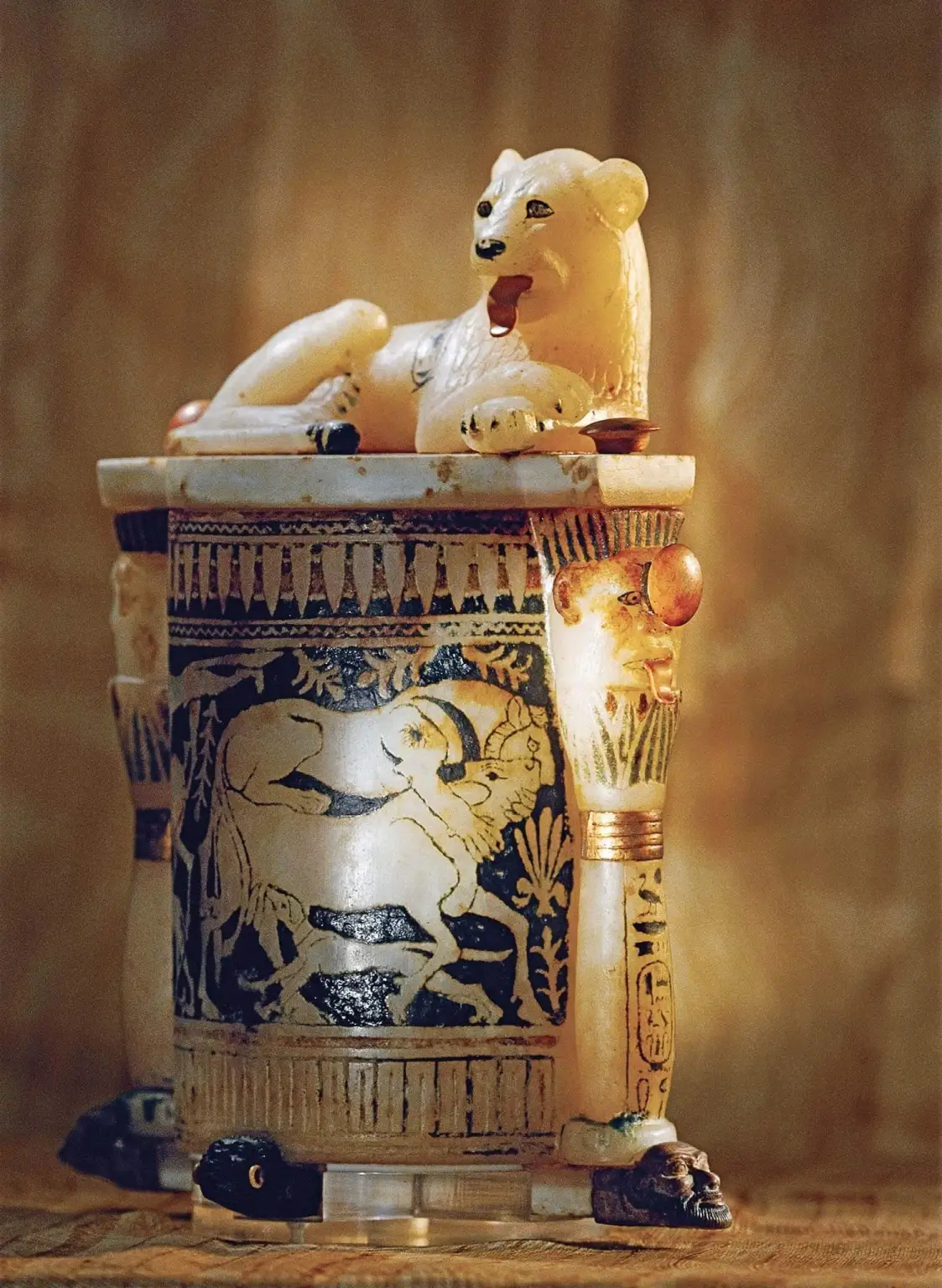Among the treasures of ancient Egypt, Tutankhamun’s cosmetic jar stands out as a testament to the art and craftsmanship of the time. Used to contain ointments or perfumes, this alabaster jar is not only functional but also a work of art, distinguished by its unusual shape and intricate design.

The lid of the jar features a small reclining lion, with its mouth open and an ivory tongue protruding, giving the piece a realistic touch. This detailed and expressive figure sets the tone for the bottle’s overall aesthetic.

Surrounding the vase are vivid scenes depicting lions and dogs in the midst of hunting bulls and gazelles. These scenes are meticulously etched and stained with vibrant red, green and blue paint, showcasing the skill and attention to detail of the ancient artisans. The images capture the dynamism and energy of the hunt, reflecting the importance of these animals in Egyptian culture.

On the sides of the vase are two columns with lotus capitals, each supporting the head of Bes, the protective god associated with the home and childbirth. This addition of Bes adds a layer of spiritual meaning, suggesting that the vase was not only a container for precious substances, but also a protective talisman.
The vase itself rests on crossed bars that end in the heads of the traditional enemies of Egypt, symbolizing dominance and protection. This combination of practical design and symbolic elements highlights the vase’s dual purpose as an everyday object and a piece imbued with deeper meaning.




